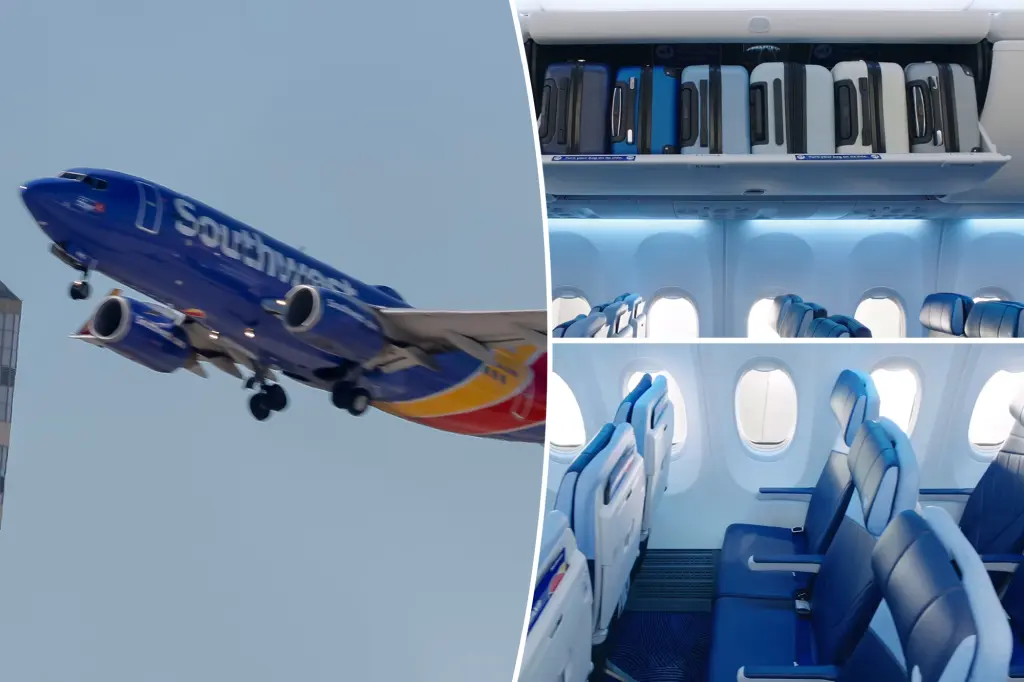Southwest Airlines Ushers in a New Era with Premium Cabin Makeover
Southwest Airlines, known for its budget-friendly approach and straightforward policies, is embracing significant change. On Tuesday, the airline revealed the highly anticipated redesign of its Boeing 737 MAX 8 interiors, marking what they call a “major milestone” in their evolution. This comprehensive cabin overhaul, set to debut on October 16, represents the culmination of a year-long teaser campaign and addresses specific customer requests for an elevated flying experience. The Texas-based carrier is betting big on these enhancements as part of a broader strategy to increase revenue and respond to pressure from activist investors who have pushed for modernization of Southwest’s operations and customer offerings.
The physical transformation of the cabins is comprehensive and passenger-focused. The redesigned interiors feature Recaro-manufactured seats that bring several comfort innovations to the Southwest experience. These new seats include multi-adjustable headrest cushions for better sleep positioning, integrated tablet and phone holders on seat backs, and improved tray tables with dual cup holders – small but meaningful improvements for passengers on longer flights. The aesthetic updates are equally substantial, with refreshed lighting systems, new carpeting, and a contemporary color palette dominated by cool blue tones creating a more modern atmosphere. Perhaps most notably, Southwest is finally addressing a long-standing passenger complaint by introducing dedicated “Extra Legroom” sections, giving taller travelers a more comfortable option.
Beyond just physical comfort, Southwest is revamping its entire passenger experience approach. The airline is making significant infrastructure improvements, including larger overhead bins to accommodate more carry-on luggage – a crucial update for an airline that has traditionally emphasized efficient boarding processes. In-seat power outlets, increasingly viewed as essential by today’s connected travelers, are being installed throughout the fleet. These electrical amenities, once considered premium features on other airlines, will become standard on Southwest’s renovated aircraft. The airline reports it has already equipped approximately 40% of its current fleet with in-seat power and 20% with the larger overhead bins, with the MAX 8 and -800 aircraft receiving priority in the refitting schedule.
The changes extend well beyond physical aircraft modifications into the realm of Southwest’s service philosophy and business model. Beginning January 27, 2026, Southwest will introduce premium seating options and assigned seating – revolutionary changes for an airline famous for its open-seating, first-come-first-served boarding process. Passengers opting for the new “Extra Legroom” section will enjoy enhanced amenities including premium complimentary beverages and expanded snack options, as well as priority boarding positions. These service upgrades signal Southwest’s willingness to adopt industry-standard practices that it had long resisted in favor of its distinctive approach to air travel.
These sweeping changes come amid significant pressure from activist investors, notably Elliott Management, which acquired an 11% stake in Southwest in 2024. Elliott has criticized the airline for “poor execution” and a “stubborn unwillingness” to modernize its operations and passenger offerings. In response to these pressures and changing market dynamics, Southwest has made the controversial decision to abandon some of its most distinctive policies. The airline’s famous “bags fly free” approach, which allowed all passengers two complimentary checked bags regardless of fare type, is being discontinued. Similarly, the carrier’s open seating policy, long a defining characteristic of the Southwest experience, will give way to assigned seating options more typical of competitors.
Critics of these changes argue that Southwest is sacrificing the very qualities that distinguished it in a crowded marketplace, potentially risking its unique brand identity. These trademark policies helped Southwest carve out a loyal customer base that appreciated the carrier’s straightforward, no-frills approach to air travel. However, Southwest leadership appears convinced that modernization is necessary to remain competitive in today’s aviation landscape. The airline’s comprehensive fleet renovation plans extend beyond just the MAX aircraft, with more than half of its 737-700 fleet scheduled to receive in-seat power beginning in 2026, with completion targeted for mid-2027. These long-term commitments suggest Southwest is fully embracing this transformation, betting that enhanced amenities and more conventional service offerings will attract new customers while maintaining the loyalty of its existing passenger base.















